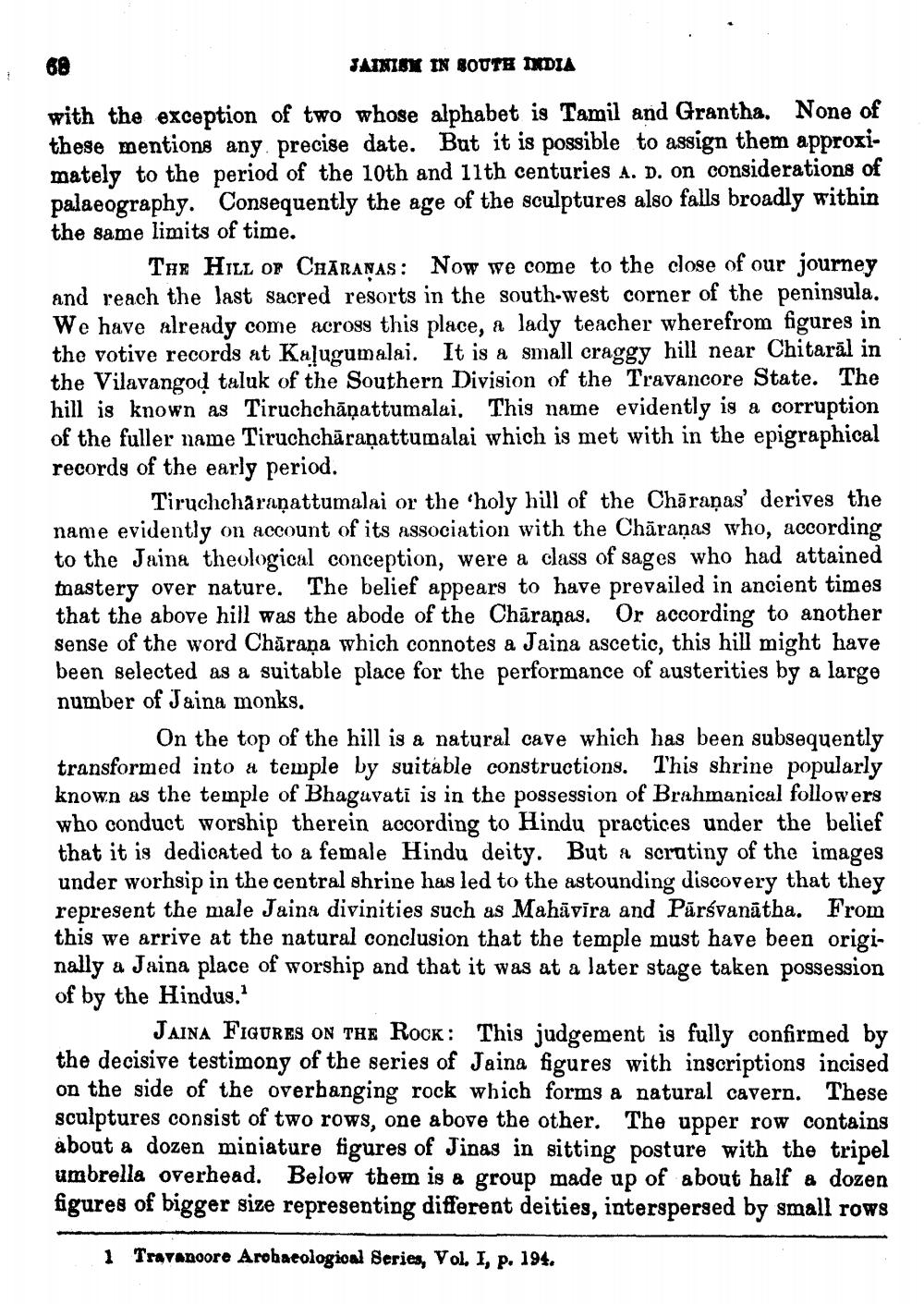________________
69
JAINISI IN ROUTE INDIA
with the exception of two whose alphabet is Tamil and Grantha. None of these mentions any precise date. But it is possible to assign them approximately to the period of the 10th and 11th centuries A. D. on considerations of palaeography. Consequently the age of the sculptures also falls broadly within the same limits of time.
THE HILL OF CHĀRANAS: Now we come to the close of our journey and reach the last sacred resorts in the south-west corner of the peninsula. We have already come across this place, a lady teacher wherefrom figures in the votive records at Kalugumalai. It is a small craggy hill near Chitarāl in the Vilavangod taluk of the Southern Division of the Travancore State. The hill is known as Tiruchchāņattumalai, This name evidently is a corruption of the fuller name Tiruchchāraṇattumalai which is met with in the epigraphical records of the early period.
Tiruchcharaṇattumalai or the holy hill of the Chāraņas' derives the name evidently on account of its association with the Chāraṇas who, according to the Jaina theological conception, were a class of sages who had attained mastery over nature. The belief appears to have prevailed in ancient times that the above hill was the abode of the Chāraņas. Or according to another sense of the word Chāraṇa which connotes a Jaina ascetic, this hill might have been selected as a suitable place for the performance of austerities number of Jaina monks.
On the top of the hill is a natural cave which has been subsequently transformed into a temple by suitable constructions. This shrine popularly known as the temple of Bhagavati is in the possession of Brahmanical followers who conduct worship therein according to Hindu practices under the belief that it is dedicated to a female Hindu deity. But a scrutiny of the images under worhsip in the central shrine has led to the astounding discovery that they represent the male Jaina divinities such as Mahāvīra and Pārsvanātha. From this we arrive at the natural conclusion that the temple must have been originally a Jaina place of worship and that it was at a later stage taken possession of by the Hindus.
JAINA FIGURES ON THE Rock: This judgement is fully confirmed by the decisive testimony of the series of Jaina figures with inscriptions incised on the side of the overhanging rock which forms a natural cavern. These sculptures consist of two rows, one above the other. The upper row contains about a dozen miniature figures of Jinas in sitting posture with the tripel umbrella overhead. Below them is a group made up of about half a dozen figures of bigger size representing different deities, interspersed by small rows
1 Travancore Arohaeologioul Series, Vol. I, p. 194.




